Abstract
The diversity of rhizobia that form symbioses with roots of black locust (Robinia pseudoacacia L.), an economically important leguminous tree species, was examined by inoculating seedling root zones with samples of soil collected from the United States, Canada, and China. Bacteria were isolated from nodules, subcultured, and verified to be rhizobia. The 186 isolates varied significantly in their resistance to antibiotics and NaCl, their growth on different carbohydrates, and their effect on the pH of culture media. Most isolates showed intermediate antibiotic resistance, the capacity to use numerous carbohydrates, and a neutral to acid pH response. Isolates had greater similarity within sampling locations than among sampling locations. The isolates were grouped by using numerical taxonomy techniques, and representative strains of 37 groups were selected. The mean generation times of these isolates ranged from 3 to 9 h, and the protein profile of each of the 37 isolates was unique. Nitrogen fixation, total nitrogen accumulation, and plant growth varied significantly among black locust seedlings inoculated with the representative isolates. We conclude that great variation exists among Rhizobium spp. that nodulate black locust, and selection of strains for efficiency of the symbiotic association appears possible.
Full text
PDF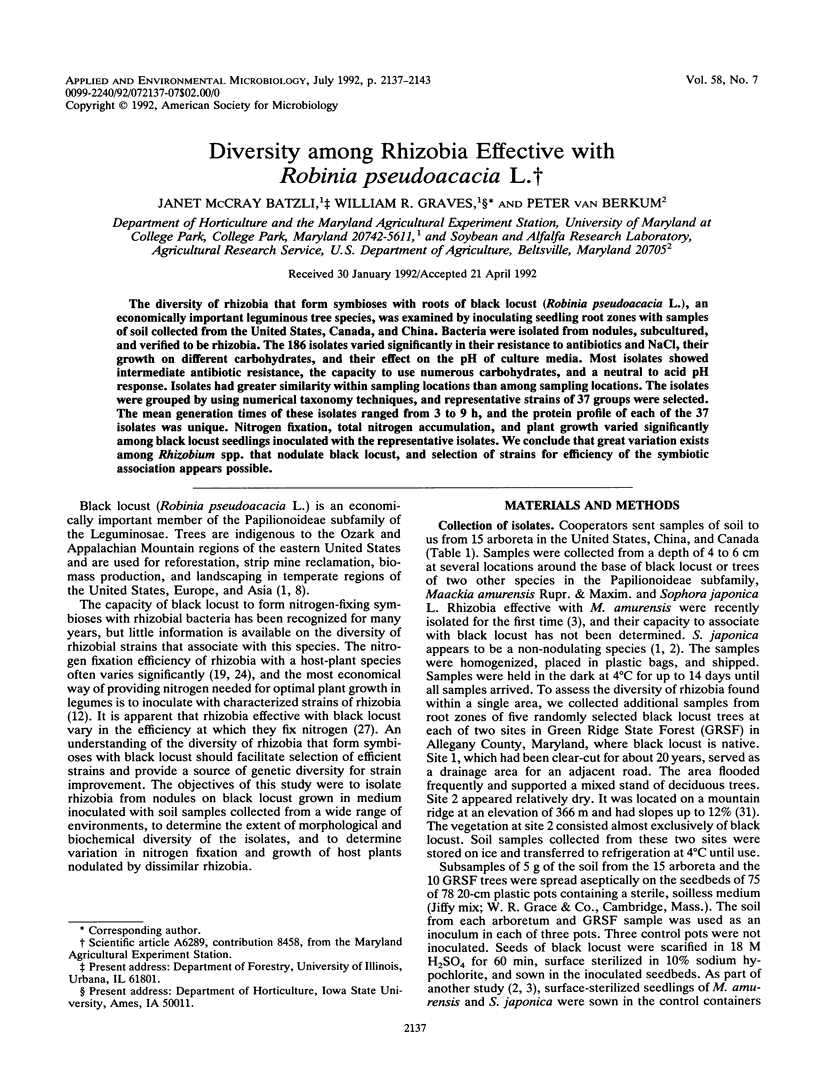
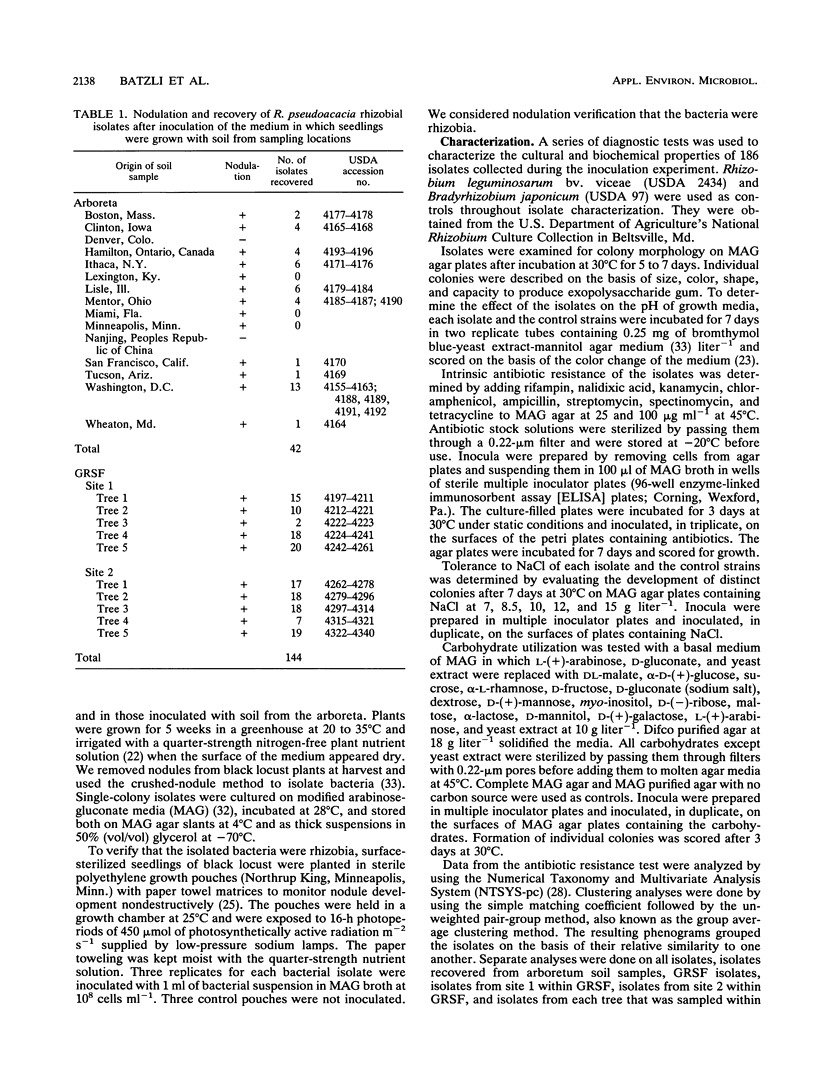
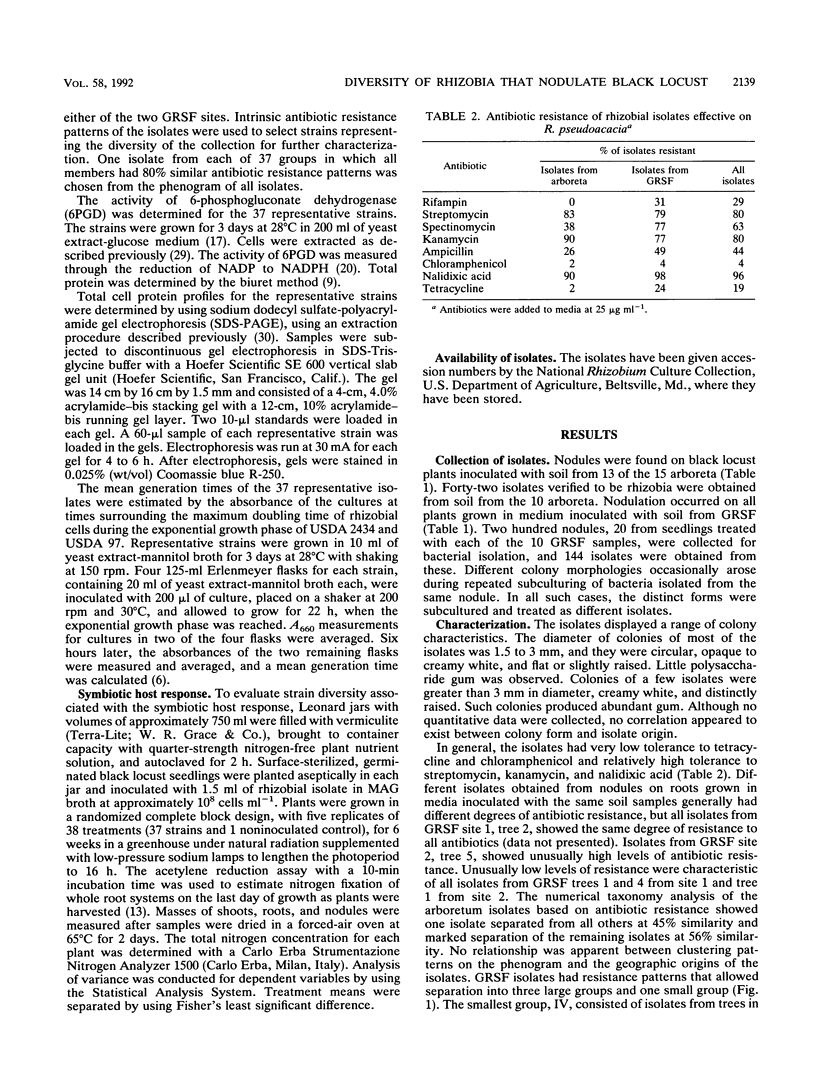
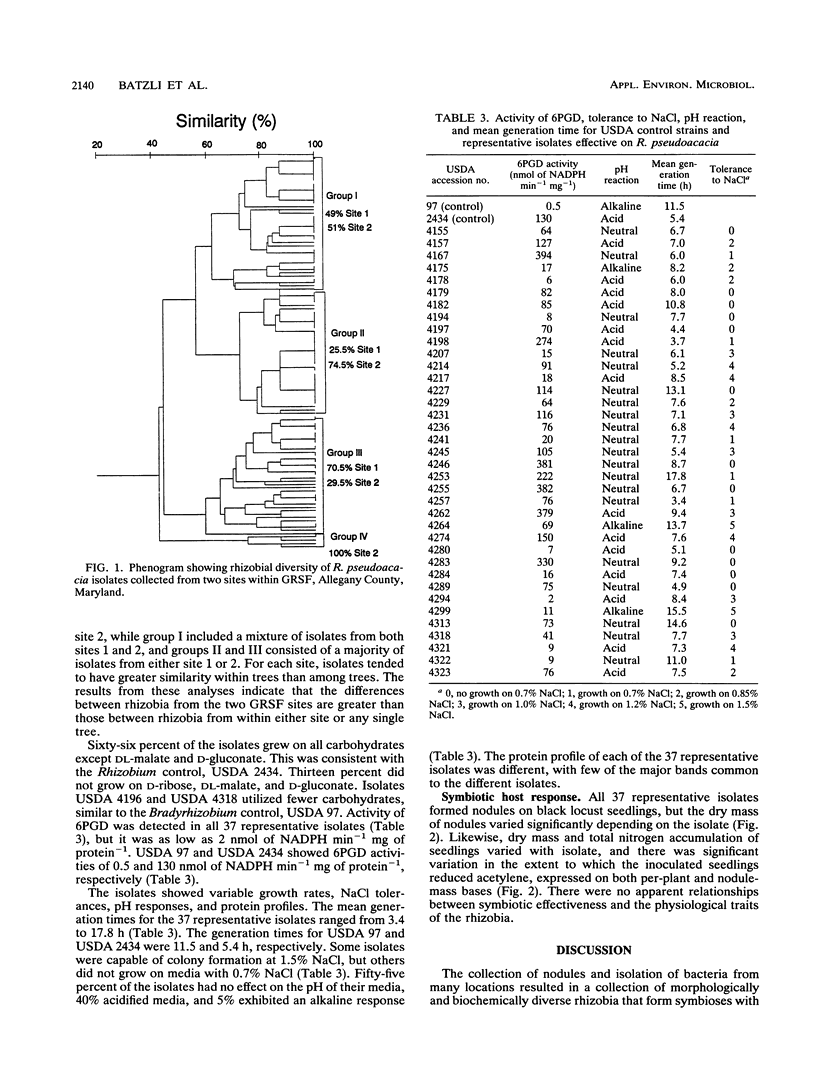
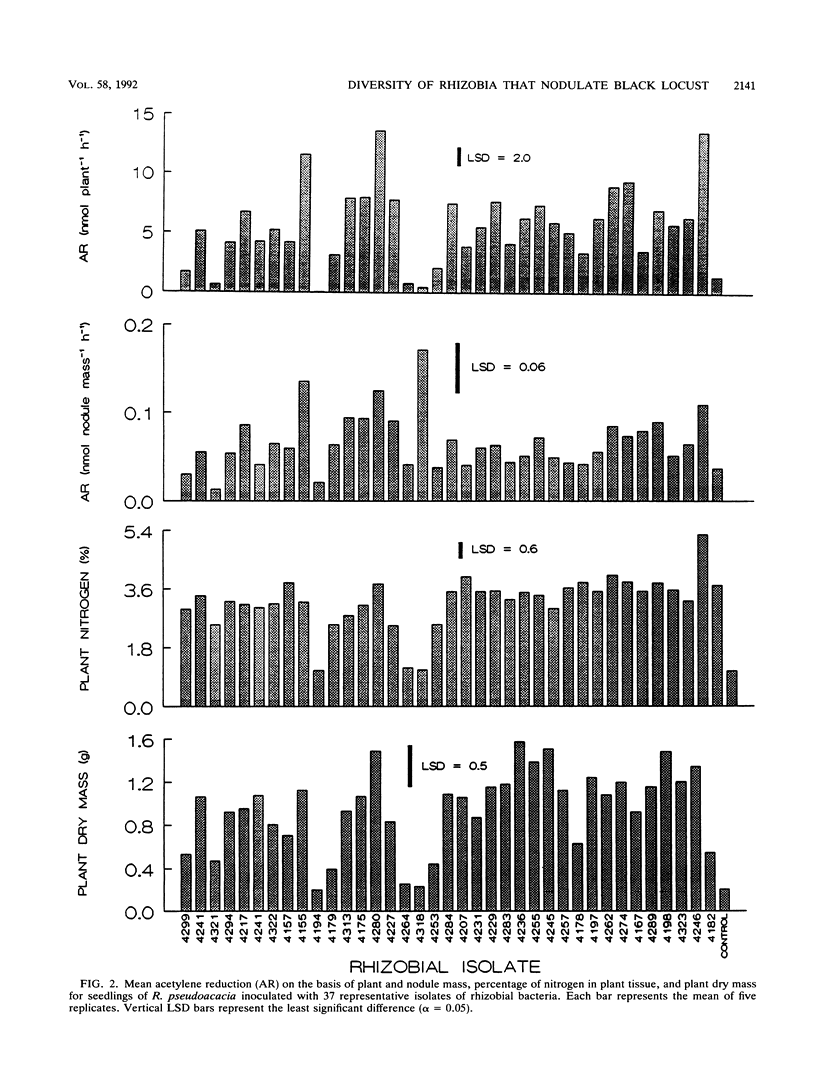
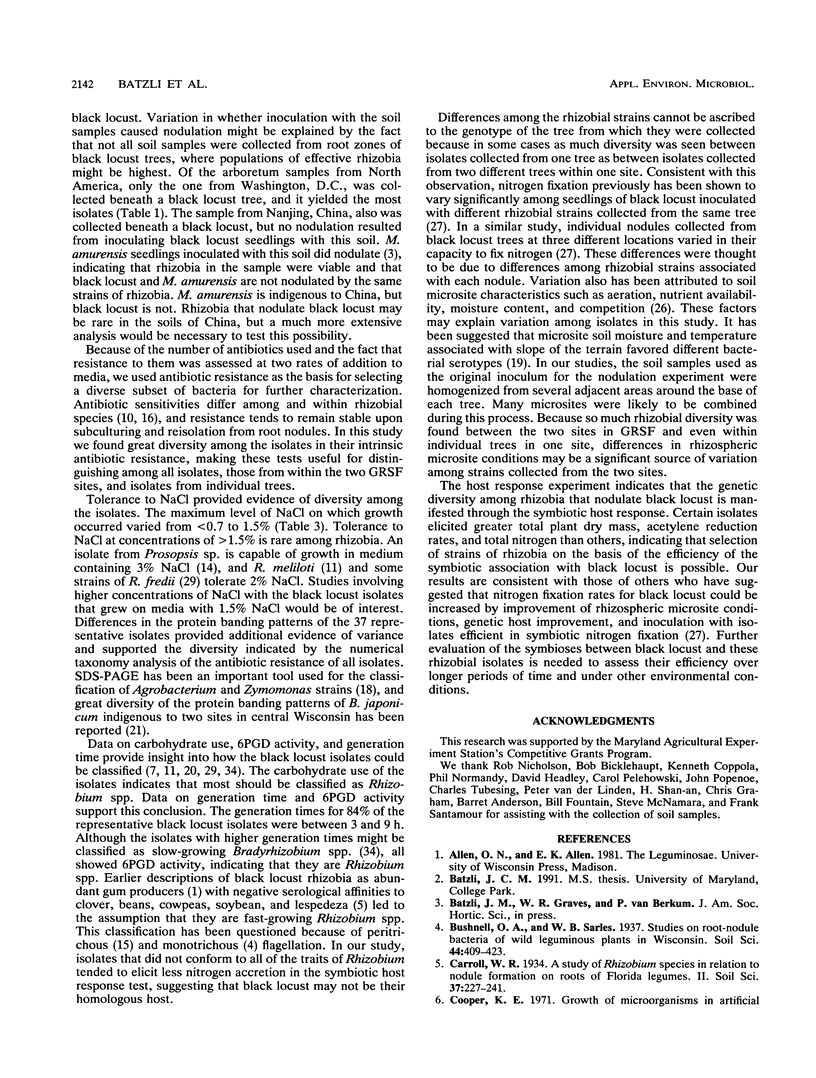
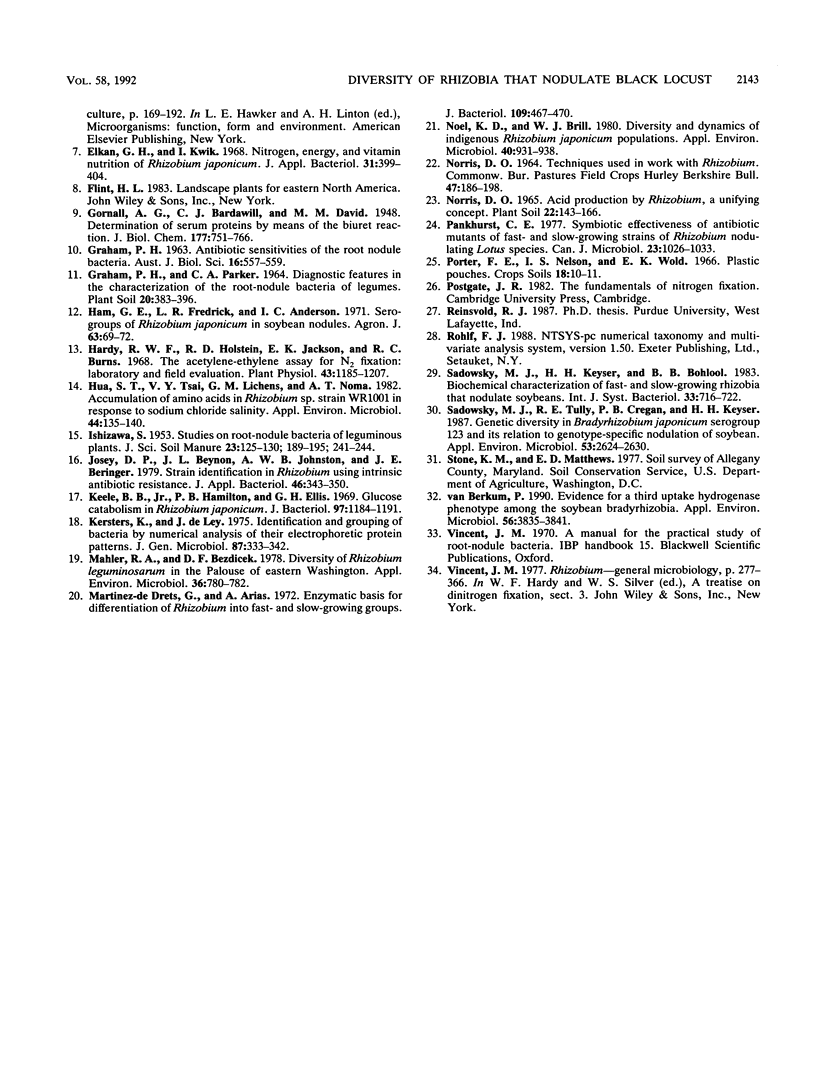
Selected References
These references are in PubMed. This may not be the complete list of references from this article.
- Elkan G. H., Kwik I. Nitrogen, energy and vitamin nutrition of Rhizobium japonicum. J Appl Bacteriol. 1968 Dec;31(4):399–404. doi: 10.1111/j.1365-2672.1968.tb00386.x. [DOI] [PubMed] [Google Scholar]
- Hardy R. W., Holsten R. D., Jackson E. K., Burns R. C. The acetylene-ethylene assay for n(2) fixation: laboratory and field evaluation. Plant Physiol. 1968 Aug;43(8):1185–1207. doi: 10.1104/pp.43.8.1185. [DOI] [PMC free article] [PubMed] [Google Scholar]
- Hua S. S., Tsai V. Y., Lichens G. M., Noma A. T. Accumulation of Amino Acids in Rhizobium sp. Strain WR1001 in Response to Sodium Chloride Salinity. Appl Environ Microbiol. 1982 Jul;44(1):135–140. doi: 10.1128/aem.44.1.135-140.1982. [DOI] [PMC free article] [PubMed] [Google Scholar]
- Keele B. B., Jr, Hamilton P. B., Elkan G. H. Glucose catabolism in Rhizobium japonicum. J Bacteriol. 1969 Mar;97(3):1184–1191. doi: 10.1128/jb.97.3.1184-1191.1969. [DOI] [PMC free article] [PubMed] [Google Scholar]
- Kersters K., De Ley J. Identification and grouping of bacteria by numerical analysis of their electrophoretic protein patterns. J Gen Microbiol. 1975 Apr;87(2):333–342. doi: 10.1099/00221287-87-2-333. [DOI] [PubMed] [Google Scholar]
- Mahler R. L., Bezdicek D. F. Diversity of Rhizobium leguminosarum in the Palouse of Eastern Washington. Appl Environ Microbiol. 1978 Nov;36(5):780–782. doi: 10.1128/aem.36.5.780-782.1978. [DOI] [PMC free article] [PubMed] [Google Scholar]
- Martínez-De Drets G., Arias A. Enzymatic basis for differentiation of Rhizobium into fast- and slow-growing groups. J Bacteriol. 1972 Jan;109(1):467–470. doi: 10.1128/jb.109.1.467-470.1972. [DOI] [PMC free article] [PubMed] [Google Scholar]
- Noel K. D., Brill W. J. Diversity and Dynamics of Indigenous Rhizobium japonicum Populations. Appl Environ Microbiol. 1980 Nov;40(5):931–938. doi: 10.1128/aem.40.5.931-938.1980. [DOI] [PMC free article] [PubMed] [Google Scholar]
- Pankhurst C. E. Symbiotic effectiveness of antibiotic-resistant mutants of fast- and slow-growing strains of Rhizobium nodulating Lotus species. Can J Microbiol. 1977 Aug;23(8):1026–1033. doi: 10.1139/m77-152. [DOI] [PubMed] [Google Scholar]
- Sadowsky M. J., Tully R. E., Cregan P. B., Keyser H. H. Genetic Diversity in Bradyrhizobium japonicum Serogroup 123 and Its Relation to Genotype-Specific Nodulation of Soybean. Appl Environ Microbiol. 1987 Nov;53(11):2624–2630. doi: 10.1128/aem.53.11.2624-2630.1987. [DOI] [PMC free article] [PubMed] [Google Scholar]
- van Berkum P. Evidence for a Third Uptake Hydrogenase Phenotype among the Soybean Bradyrhizobia. Appl Environ Microbiol. 1990 Dec;56(12):3835–3841. doi: 10.1128/aem.56.12.3835-3841.1990. [DOI] [PMC free article] [PubMed] [Google Scholar]


